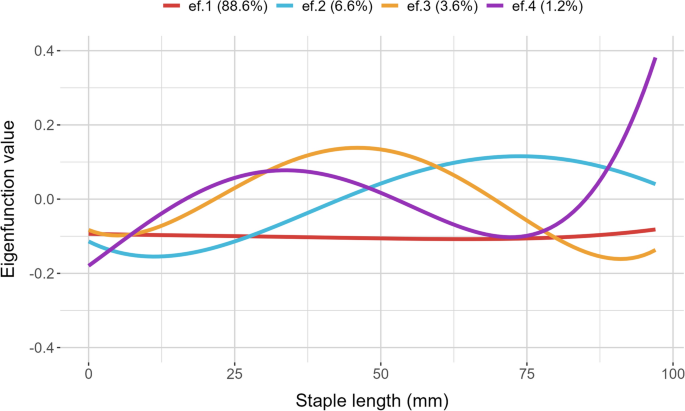How an Optical Fibre Diameter Analyser Ensures Consistent Results
How an Optical Fibre Diameter Analyser Ensures Consistent Results
Blog Article
Maximize Your Fiber Optic Performance: Recognizing Optical Fibre Diameter Analyser Modern Technology
The efficiency of fibre optic systems is seriously affected by the precision of their diameter, a factor frequently neglected in the quest of optimum signal stability. Comprehending the technology behind optical fiber size analysers exposes the intricate equilibrium in between measurement accuracy and production quality. These gadgets not just improve conformity with sector requirements however likewise supply real-time insights that can preemptively resolve potential issues. Nonetheless, the implications of their usage expand beyond mere dimension; they can essentially change the landscape of fiber optic effectiveness. What elements should one take into consideration to harness their complete possibility?
Significance of Optical Fiber Diameter
The size of optical fibre plays a crucial function in establishing the performance and efficiency of communication systems. It influences a number of crucial criteria, consisting of the setting of light propagation, attenuation, and bandwidth capability. Bigger sizes usually permit multiple light settings, facilitating greater information transmission rates. Alternatively, smaller sized sizes often tend to sustain less modes, which can improve signal quality and lower crosstalk.

In addition, recognizing the diameter's implications can cause set you back savings by reducing the need for signal amplification and repeaters in considerable networks (optical fibre diameter analyser). In conclusion, the value of optical fiber size can not be overstated, as it straight affects the total performance and integrity of modern interaction systems

How Diameter Affects Signal Quality
Signal top quality in optical fibre systems pivots substantially on the size of the fibre. A smaller diameter can lead to greater depletion prices, resulting in signal loss as light travels through the fiber.
Conversely, bigger sizes generally permit improved light capture and reduced modal diffusion, boosting signal clearness. In multimode fibers, a bigger core diameter can support numerous light modes, but it may likewise present intermodal dispersion, which can weaken signal quality. Picking the ideal fibre size is essential for attaining the preferred efficiency in certain applications.
Furthermore, the communication between the fiber diameter and the wavelength of the light used plays a crucial duty in determining the efficient transmission range and general signal stability. Recognizing just how fibre diameter impacts signal quality is important for network designers and engineers striving to enhance optical fiber systems for trustworthy, high-speed information transmission.
Review of Size Analyser Modern Technology
In numerous optical fibre production processes, accurate dimension of fibre size is crucial for making sure constant performance and quality (optical fibre diameter analyser). Size analysers are sophisticated instruments created to evaluate the physical measurements of optical fibers with high accuracy. They employ innovative optical and laser modern technologies to gauge the diameter, ovality, you can check here and concentricity of the fibre, hence offering vital information for quality assurance
These analysers can operate in-line throughout the manufacturing process or as part of off-line screening procedures. In-line systems make it possible for real-time surveillance, enabling producers to adjust specifications immediately, thus preserving ideal manufacturing conditions. Off-line analysers, on the various other hand, supply comprehensive analyses of sets, making certain that any kind of deviations from specified tolerances are recognized and dealt with.
Diameter analysers dramatically add to the reduction of flaws in optical fibers, improving overall product integrity. By regularly determining essential criteria, these technologies assist in compliance with market standards and specs. As the need for high-performance optical fibres remains to rise, the role of size analysers becomes significantly vital in accomplishing the preferred top quality and efficiency criteria in fibre optic systems.
Key Attributes of Fiber Size Analysers
Although numerous versions of fiber diameter analysers exist, they generally share numerous essential features that enhance their functionality and integrity. Among the most substantial attributes is high-resolution dimension abilities, which make certain precise diameter readings, important for preserving quality assurance in fiber production. In addition, several analysers include advanced optical sensors created to discover minute variants in fiber diameter, hence giving important information he has a good point for procedure optimization.
One more essential attribute is real-time surveillance, enabling operators to obtain immediate feedback on fiber diameter throughout the production procedure (optical fibre diameter analyser). This capability helps with rapid adjustments and reduces the possibility of issues. Lots of analysers also come outfitted with straightforward interfaces, making it possible for operators to easily navigate via settings and data outputs
Furthermore, durable information storage space and evaluation functionalities are crucial for tracking historic performance trends and ensuring compliance with industry criteria. These functions jointly contribute to the efficacy of fibre size analysers in enhancing fibre optic performance.
Finest Practices for Fibre Optimization

First, normal calibration of optical fiber size analysers is necessary. This makes sure exact dimensions and reduces potential disparities that could affect performance. Next, keeping a clean functioning environment is essential; dust and impurities can result in signal degradation.
Additionally, it is necessary to select fibres that satisfy specific application demands. This entails examining aspects such as depletion, bandwidth, and environmental problems. Appropriate installment techniques must also be complied with, including staying clear of sharp bends and too much tension, which can compromise fiber stability.
Moreover, using sophisticated tracking systems can assist in real-time performance assessments, allowing punctual identification of concerns. Normal testing and maintenance need to be conducted to make sure that fibres continue to be within optimum functional specifications.
Last but not least, training workers on the current fibre optimization modern technologies and methodologies will certainly improve their capacity to execute reliable techniques. By adhering to these finest methods, organizations can significantly improve the performance and lifespan of their optical fibre systems, making sure effective communication and information transfer.
Conclusion
Finally, the combination of optical fiber diameter analyser innovation is important for maximizing fibre optic efficiency. By guaranteeing exact measurements of fiber dimensions, these analysers substantially improve signal high quality and decrease losses during data transmission. Routine calibration and upkeep of the analysers are crucial to copyright ideal efficiency and conformity with market standards. Ultimately, the application of this innovation facilitates boosted information transmission rates and enhances signal integrity, adding to the overall efficiency of fiber optic click to read more systems.
Signal quality in optical fiber systems pivots dramatically on the diameter of the fibre.In lots of optical fibre production processes, accurate dimension of fiber size is vital for making certain constant performance and top quality. As the demand for high-performance optical fibers continues to increase, the role of diameter analysers comes to be progressively important in attaining the preferred high quality and efficiency criteria in fiber optic systems.
These features collectively contribute to the effectiveness of fiber size analysers in enhancing fibre optic efficiency.
In verdict, the integration of optical fiber size analyser technology is essential for optimizing fibre optic performance.
Report this page